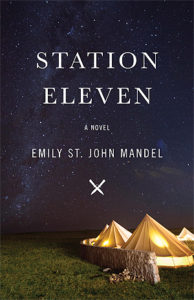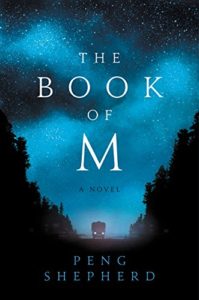Post-apocalyptic fiction has experienced a surge in popularity that began in the mid 2000s and continues to this day. Books like The Road, The Passage, and Station Eleven have shown us that (A) readers still love these stories, and (B) there are still plenty of original ways to end the world.
Below, I’ve gathered some post-apocalyptic world building ideas, tips and strategies you can use when writing a short story or novel of your own. As a novelist myself, I’ll be focusing more on book-length works. But these strategies can be applied to fiction of any length, from a 2,000-word short story to a 500-page novel.
Notes on usage: Sometimes the term “world-building” is hyphenated. Other times, you’ll see it written as one word. According to the Merriam-Webster Dictionary: “There’s evidence of both spellings in print, but world-building is much more common in published, edited text.” In this article, I’ve chosen to write it as two separate words (with no hyphen) whenever it follows “post-apocalyptic.”
Post-Apocalyptic World Building in Fiction
This is not a writing class and there aren’t any rules. As a fiction writer, you’re free to blaze your own trail. Even so, you might find these post-apocalyptic world building strategies useful as you move forward with your story or novel project. So let’s dive in with #1…
1. Create a world that challenges your characters.
Fiction works best when characters have to struggle in some way. Challenges, hurdles, obstacles — this is what keeps readers turning pages. When characters face challenges, they are forced to act. And by acting, they show us who they are and what they’re made of.

The good news is that post-apocalyptic fiction gives you, the author, plenty of opportunities to challenge your characters. Maybe they struggle to find food and water each day. Maybe they have to live their lives in hiding, due to some existential threat. Maybe they struggle against natural disasters.
The point is, you can increase the tension and drama in your story simply by challenging your protagonist and other characters. And post-apocalyptic world building gives you plenty of ways to do this.
When you think about it, that’s the basic model for most novels. The protagonist pursues some goal or objective, but something stands in their way. So they tackle that problem, only to encounter an even bigger problem. And so it goes, with ever-increasing tension, until they reach the climax.
When creating a post-apocalyptic world for your novel or short story, think about the different ways you can challenge your characters. Think about the hardships they must endure in this new world, and how those hardships drive them forward. This will set your story in motion.
2. Get your story’s timeline straight.
When did “the apocalypse” happen, relative to where your story begins? Did it just happen, right as the story opens? Is it months or years on the past? Is it currently unfolding, or about to happen in chapter two?

Answering these types of questions can help you get your story moving, like a catalyst that ignites a process. It will also help you be consistent with your setting, timeline, character development, etc.
It’s essential work, so the sooner you start thinking about it the better.
When it comes to post-apocalyptic world building in fiction, the timeline shapes the story in many ways. Let’s look at an example to see how:
Imagine a story where a devastating, cataclysmic event completely destroys civilization, leaving isolated individuals and small groups to fend for themselves. Just by adjusting the timing of that event, we could end up with three very different stories, as shown below…
- If the cataclysmic event happened a year before the story begins, the survivors would already have established routines and procedures for shelter, food gathering, obtaining water, etc. They might even be in a kind of civilization-rebuilding phase, working as tribes or clans to achieve the common goal of survival. They could have some form of organized government, on a small scale.
- If the event just happened when the story begins, the survivors will still be in “scramble mode.” They’ll be operating with a sense of shock, disbelief and fear. They won’t have any idea where to go or what to do. They’ll be focused on short-term survival and little else. This would be a more fast-paced story.
- If the event is about to happen, we have a pre-apocalypse scenario with very different storytelling options. Maybe the characters know what’s coming and they’re in preparation mode. Or maybe they have no clue and are going about their ordinary lives, not knowing the world is about to be turned upside down. This approach allows you create suspense, right from the start.
3. Visualize your characters’ daily lives.
If you’re reading this blog post right now, that means you have internet connection. It also means you have reliable electricity, a relatively safe environment, and enough leisure time to pursue hobbies like fiction writing.

But what if you had none of those things?
- What if your life revolved around day-to-day survival?
- What if you constantly had to worry about food foraging or shelter?
- What if you lived in fear of zombies, bandits, cannibals, or some other threat?
- What would your daily life be like in those scenarios?
Forget about hobbies and interests and “passions.” Forget about smart phones and safe neighborhoods and supermarkets. In a post-apocalyptic world, you’d have none of that. Your entire day would revolve around the act of surviving.
Or maybe you’re building a post-apocalyptic world with more of a dystopian theme, like Panem in The Hunger Games novels. In that case, you might imagine yourself living under the oppression of a central controlling authority.
How would that kind of existence affect your mindset? What would you think and feel throughout your days, knowing you lived with an oppressor’s boot on your neck?
By imagining yourself in these types of scenarios, you can more easily imagine the lives of your characters. This type of visualization will help you breathe both life and realism into your post-apocalyptic world building and fiction writing.
4. Remember that you don’t have to explain everything.
In Cormac McCarthy’s Pulitzer prize-winning post-apocalyptic novel, The Road, civilization has been burned away (literally) by some kind of global firestorm. But as readers, we don’t really know the origins of this event.

While McCarthy delivers a few flashbacks via the main character, they offer few details about how it all started. He shrouds the firestorm in mystery, allowing us to focus on “the man” and “the boy” as they navigate the post-apocalyptic landscape.
I’ve shared this example to relieve you of a certain burden. When it comes to world building in fiction, you don’t have to describe every little aspect of your fictional setting and timeframe. You don’t have to give a detailed history of how the “old world” ended and the new one began.
You can leave some of these details out, and your post-apocalyptic story or novel might be better for the omission.
The main thing is that you don’t confuse your readers. In the example above, McCarthy didn’t need to share the complete history of the apocalypse to tell the kind of story he wanted to tell. He only needed his readers to know that the world had been turned into a burnt-out wasteland, something that becomes apparent within the first few pages.
5. Consider how people have (or haven’t) changed.
Post-apocalyptic fiction gives you, the author, a chance to “reboot” the world order and change the way people think. These changes can affect the individuals characters in your story, as well as society as a whole.

Here are just a few examples:
- A global fertility crisis might fundamentally alter the relationship dynamic between men and women.
- A cosmic disaster that makes the earth’s surface unlivable might force humans into a subterranean existence.
- A zombie apocalypse might lead to the rise of some new extremist religious order.
- An alien invasion might persuade the nations of the world to put aside their differences and cooperate against a common enemy.
- A devastating nuclear holocaust might result in tribal societies that prohibit the use or development of all weapons.
When we talk about post-apocalyptic world building in fiction, there’s a tendency to focus on the physical setting and description. What does the new world look like? What kinds of resources are (or aren’t) available? How do people navigate this new landscape?
That’s part of it, obviously. But a savvy fiction writer will go beyond all of this to describe how people have changed in the aftermath. These writers will explore everything from religion (or the lack of it) to laws to philosophy.
In a sense, post-apocalyptic world building is also people building. You’re creating a brand-new society with its own details and idiosyncrasies.
6. Balance world building with character development.
This is an offshoot of tip #5 above. As they focus on post-apocalyptic world building, fiction writers can develop a kind of tunnel vision. They might spend so much time developing their fictional world that they neglect the characters who inhabit it.

But we have to remember, it’s the characters that keep readers turning pages.
World building in fiction is similar to set design for film and theater. It gives the reader (or audience) a context and background. It “paints the scene,” helping the reader to become immersed in the story. But it’s not the story.
Characters are the story.
The story unfolds and moves forward when the characters make choices and take action. That’s what propels the narrative. This is true for post-apocalyptic fiction, sci-fi, fantasy, “mainstream” literary fiction — you name it.
Post-apocalyptic world building creates the setting for your story or novel. But without interesting and believable characters, it’s like an empty stage or set.
Need some direction? Check out my guide to creating believable characters in speculative fiction.
7. Draw inspiration from other post-apocalyptic books.
Of all the post-apocalyptic world building tips and ideas on this list, you’ll probably enjoy this one the most. And you might already be ahead of the class.

One of the best ways to develop your world building skills is by analyzing the works of others.
The first time you read a story or novel, you probably do it for the pure enjoyment. You turn off the critical part of your mind and allow yourself to “sink” into the story. This enhances the reading experience. So by all means, keep doing it!
But when you come across a post-apocalyptic novel or story that does a great job with world building, I recommend reading it twice.
- The first time, just enjoy the ride. Don’t overthink it. Allow yourself to become immersed in the story.
- The second time, go back and analyze the world-building aspects of the story. Ask yourself: how did this author create a believable and interesting world for the characters? And how are the characters shaped by that world?
Look for specific examples throughout the book. Mark them with Post-it page markers, so you can refer back to them later. Take notes. Make a list of things the author did well, and then think about how you can apply those techniques to your story (in your own unique way).
Want more advice? Check out these tips for writing a post-apocalyptic novel.
